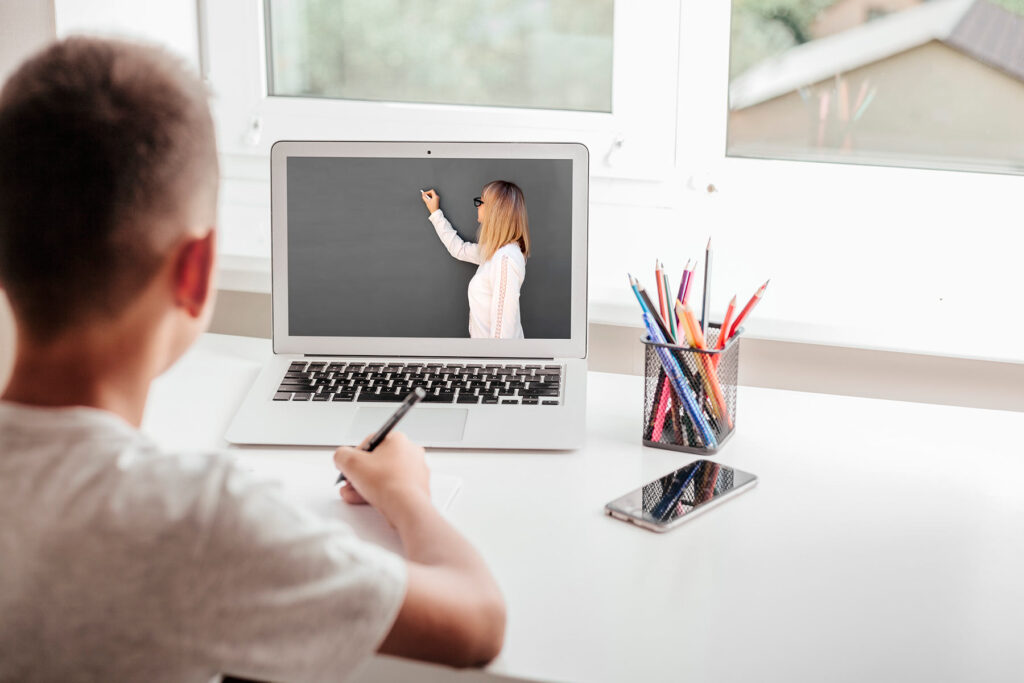Between hybrid learning, working at home and social distancing, we’ve all been spending more time at home the last several months. And while the future is uncertain, there’s probably plenty more to come at least in the near future.
With all that in mind, most of us are looking to create better, more productive workspaces at home for children and adults.
That might mean building an addition to create extra room for your growing classroom or office needs, or redesign of the existing space to get the most out of your home. With more than a decade of experience helping Lakes Region homeowners realize their dreams, Clason Remodeling can help you create the best solution for you and your family.
We can help you remodel your home with flexibility in mind – creating adaptable spaces that can be used for multiple purposes. For example, consider if you have a large open floor plan. By using features such as French Doors we can create a flexible space that provides multiple private spaces when necessary, but shared space when desired.
Finished basements, attic spaces or loft areas can also create private, flexible workspaces for students or parents.
Below are some of the areas you’ll want to think about when planning out your remodeled home classroom. It’s important to involve the students in the planning as well and to give them some say in their workspace.
1. Create privacy
Creating an optimal learning space is about balancing the need for quiet and supervision.
A separate room, away from the main traffic flow of the house, is best if there is just one person who needs to work in quiet. A space that allows you to close a door will give children (or adults) the necessary privacy for Zoom calls or Google classroom meetings. We have plenty of options to help you convert existing space to a perfect learning environment.
If you’ve got children doing schoolwork at home – and they need supervision – a good solution is to set up a little-used guest room or dining room with multiple workstations. If you’re looking for a longer-term answer, a finished basement makes a lot of sense.

2. Seek natural light
Many studies have shown that natural light enhances productivity, so if possible, avoid interior rooms. A room with large windows and lots of sunlight will inspire learning and help keep your students engaged. If you’re going to opt for the basement, try to locate it in a room or part of the basement with windows.
3. Install sufficient lighting
Natural light isn’t enough, of course. Good ambient lighting will help reduce eye strain, headaches and other problems. Position desks and computers to avoid glare but offer sufficient lighting for tasks. Consider installing LED lighting. LED lights aren’t as harsh as fluorescent bulbs, use less energy than other types of lighting and have a very long life.
4. Creative storage and organization
A cluttered desktop will make it difficult for students to focus. You may be working with a small space, so it’s time to get creative with your storage. Inset cubbies, racks or floating shelves on the wall can help save valuable floor and desk space. Built-in cabinets will hide printers and other peripherals that otherwise will clutter up the space. Open tubs or bins can make good makeshift solutions, as they keep school gear close and visible.

5. Don’t forget ergonomics
Just like when creating a home office, you want to be thinking about the layout of the workspace for students. For younger students, that means choosing solutions that are appropriately sized. Working at an adult-sized desk or table will lead to smaller students being more uncomfortable and less productive.
Set up a desk or table so that the back and neck are straight, and arms are parallel to the desk. Adjust the chair height so feet are flat on the floor (and while we’re at it, invest in a good chair). Make sure the whole arrangement is set up so the student doesn’t have to lean over, slouch or crane their neck to work.
(For adults, standing desks have also shown health benefits. Depending on your time in front of the computer, it can be a good solution.)
Be sure to take plenty of breaks to stretch and walk around. This is good for Mom and Dad, too, and will also reduce eye strain.
6. Multiple zones
Students are used to working in multiple spaces throughout the day at school, so consider doing the same at home. For example, use a traditional desk for concentrated work, such as math or writing, then a kitchen table for large projects and a comfortable chair for daily reading.
These temporary changes may solve your home learning and working needs, but if you’re ready for a long-term solution, Clason Remodeling can help you upgrade your learning space. Whether it’s a home office or a new kitchen, we are ready to help you with your next remodeling project.

